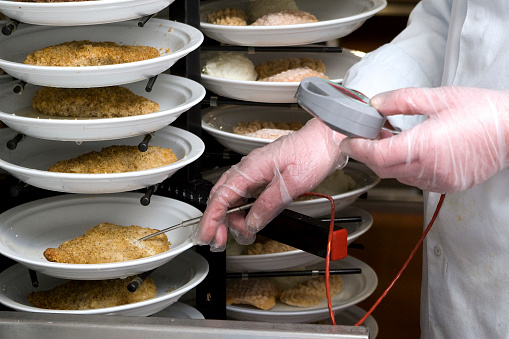Safe Food Handling 101: What Is (and Isn’t) Safe

We all have unique talents and experiences. As such, we’re knowledgeable in some areas and not in others. And that’s OK! But if you’re looking to expand your skill sets or move into another industry, it’s important to understand the basics, especially if customer safety is involved.
Take foodservice, for example. Can you prepare both vegetables and meats in the same area? How often should you wash your hands? Should food always be refrigerated? We address these basic safe food handling best practices and more in this blog post.
Food Safety Mistakes
First, let’s cover what NOT to do. Contrary to popular belief, you don’t always have to learn things the hard way, so learning from others who have made these mistakes and using it as valuable information moving forward is a big benefit. Here are 10 dangerous food safety mistakes from the Centers for Disease Control and Prevention (CDC):
- Not cooking meat, chicken, turkey, seafood, or eggs thoroughly.
- Eating raw batter or dough, including cookie dough, and other foods with uncooked eggs or uncooked flour.
- Thawing or marinating food on the counter.
- Leaving food out too long before putting it in the fridge.
- Peeling fruits and vegetables without washing them first.
- Not washing your hands.
- Eating risky foods if you are more likely to get food poisoning.
- Putting cooked meat back on a plate that held raw meat.
- Tasting or smelling food to see if it’s still good.
- Washing meat, chicken, or turkey.
Food Safety Best Practices
On the other hand, you can be proactive with food safety and teach your fellow employees best practices when it comes to food safety. This not only protects your customers, but helps your company avoid risk and improves overall workforce credibility. Here are a four of the most basic (and most important) food safety best practices to follow:
- Wash your hands and clean surfaces often.
- Separate ingredients (raw/cooked, vegetables/meat, etc.) to avoid cross-contamination.
- Cook everything to a proper temperature and verify with a thermometer.
- Refrigerate foods appropriately and promptly.
Where to Learn More About Food Handling
What if we told you there was a way to learn about all of the above food safety mistakes and best practices, in addition to a wealth of other food safety knowledge? With a food handlers certificate, you gain valuable information about food safety, personal hygiene, temperature control/time, cross-contamination and proper cleaning. Best of all, it’s affordable, can be completed online and you get a certificate/card immediately upon completion.
If you’re interested in learning the principles of food safety and getting your food handlers certificate, enroll with American Course Academy today.
